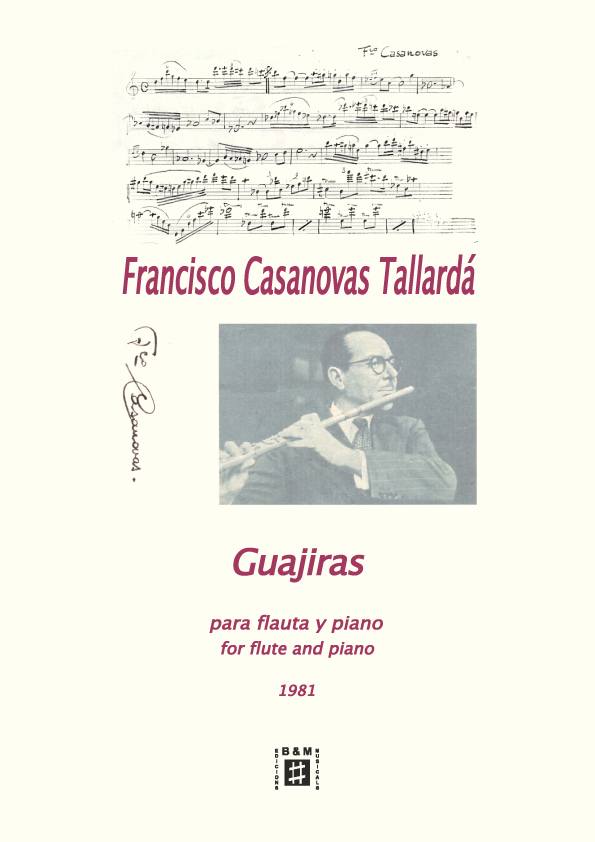Description
Author
Instrumentation
Duration
Pages
Year of composition
ISMN
Ref.
In 1945, while Casanovas was in New York, he heard that there was a competition for instrumentalists at Columbia Hall. He intended to take part in the flute competition, but as the saxophone competition was earlier, he decided to take part as well. The compulsory work was Jacques Ibert’s Concertino da camera, and Casanovas also presented his Guajiras as a free work. In this work he showed off his expressive and technical qualities, among them his fast double picado, admired by all who heard it because of its difficult execution on the saxophone, even considered impossible by many. Among the hundred or so great virtuoso saxophonists who took part, Casanovas won the First Prize and the Golden Button ahead of the Americans Sigurd Raschèr (second) and Ray Starita (third). It so happens that Raschèr, of German origin, was the dedicatee of more than two hundred works for saxophone by important composers of the 20th century, including the famous Concertino da camera by Ibert, a work he premiered in 1935. Despite winning the Columbia Prize, Casanovas was so angry that he threw his saxophone out of the window of the flat where he was staying, after learning that he could only compete with one instrument and that he could no longer compete with the flute, which was what he had wanted.
The guajira is a musical genre derived from the Cuban punto. In the 1930s, it was refined and popularised as “Guajira de Salón” or “Guajira-Son” by the singer and guitarist Guillermo Portabales. Its rhythm uses alternating 6/8 and 3/4 time signatures.
Guajiras de Casanovas consists of an introduction that begins with a brief piano introduction, whose motifs the soloist repeats and develops with a certain flamenco Spanish air. The piano then begins a “Tiempo de Guajira” which serves as the basis for the soloist to present the theme and different variations based on scales, arpeggios and double notes. Finally, the opening introduction is repeated and interrupted for the soloist to play a cadenza followed by a brief and conclusive two-bar coda.
The present edition of Guajiras is based on the manuscript of the version for flute and piano made by the composer himself in 1981, which bears the following dedication: “Recuerdo para Juan Francisco Cayuelas” (Remembrance for Juan Francisco Cayuelas). In this version, the author proposes during the “Tiempo de Guajira” several alternative measures or “ossia” depending on the skill of the soloist who plays it, as well as a different and longer cadenza than the original one for saxophone.
Juan Francisco Cayuelas Grao





















There are no reviews yet.